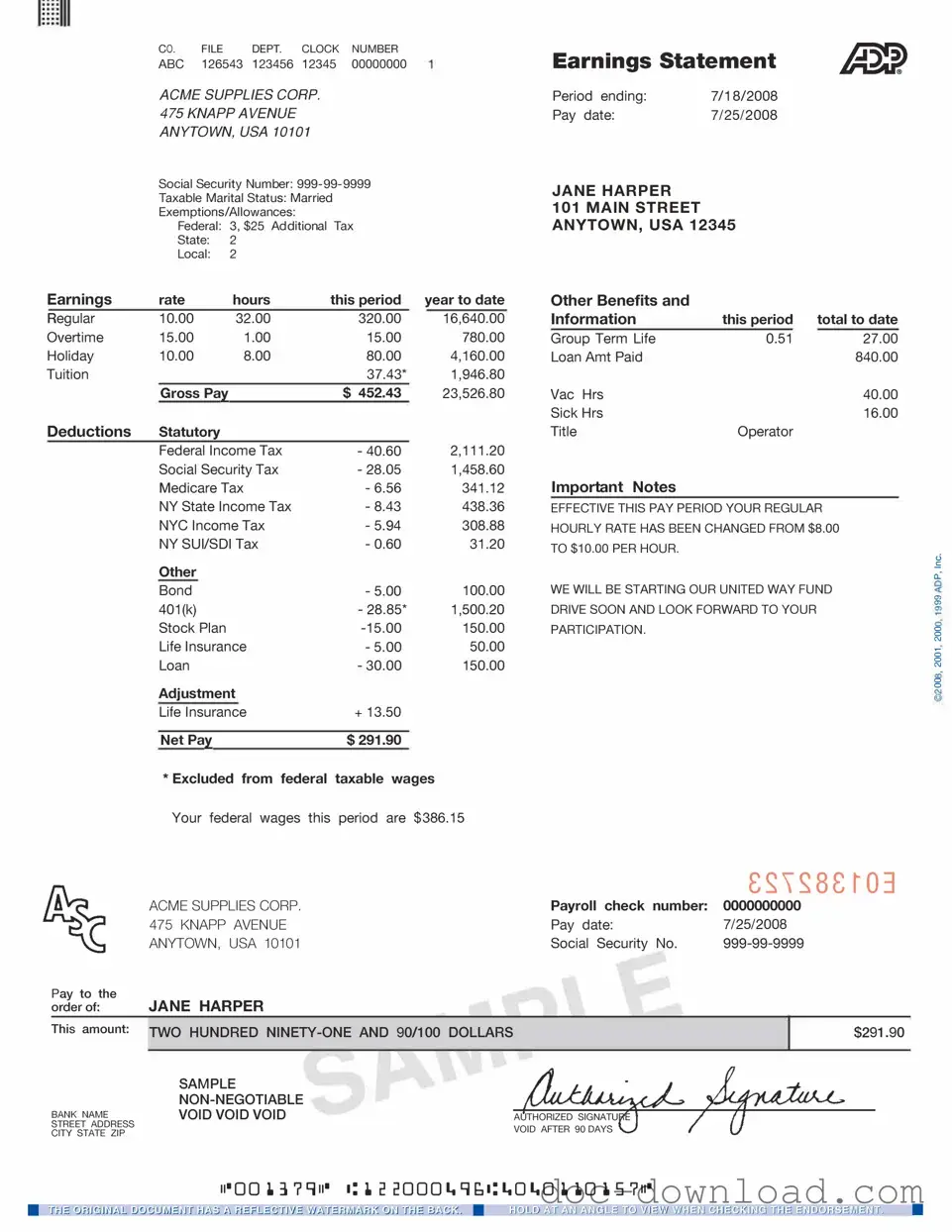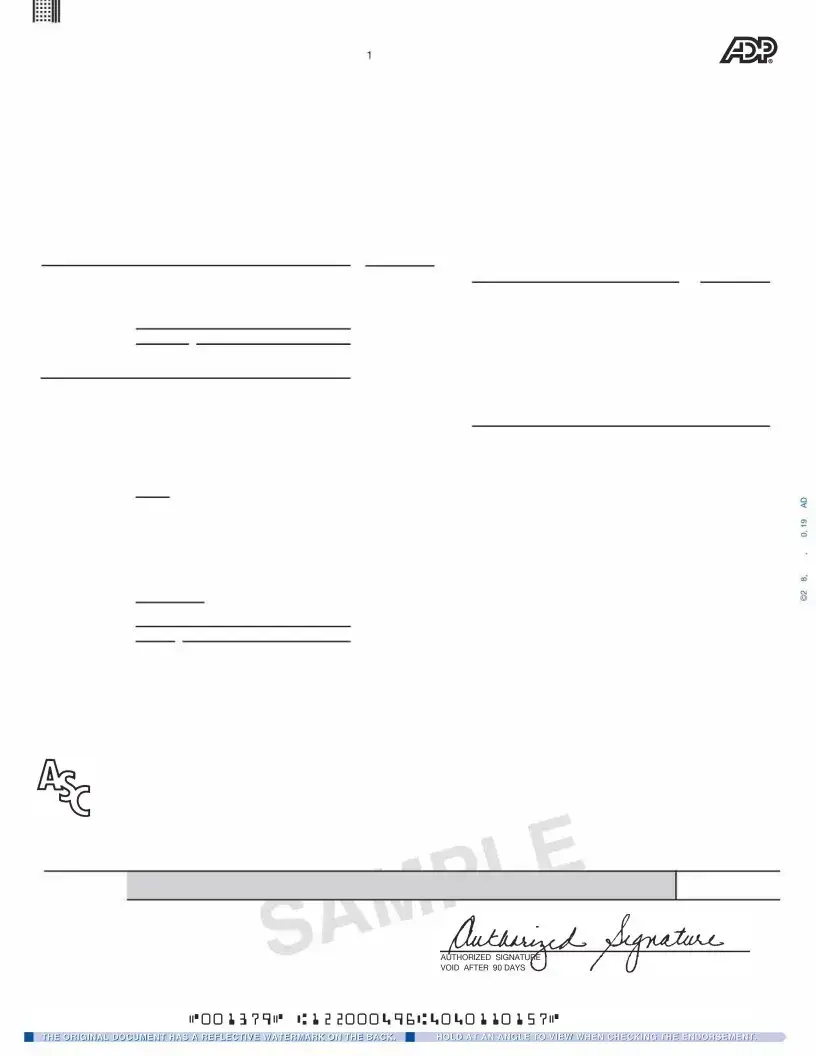The W-2 form is a crucial document for employees in the United States. It summarizes an employee's annual wages and the taxes withheld from their paycheck. Similar to the ADP Pay Stub, the W-2 provides a detailed breakdown of earnings, including bonuses and other forms of compensation. While the pay stub reflects earnings for a specific pay period, the W-2 aggregates this information over an entire year, making it essential for tax filing purposes.
When it comes to purchasing or selling a vehicle, having the right documentation is essential to avoid complications. In this regard, the Bill of Sale for Cars is a vital legal document that not only confirms the transaction but also protects both parties involved. It ensures that all necessary details surrounding the transfer of ownership are properly recorded, thus safeguarding the rights of buyers and sellers alike during the vehicle sale process.
The pay statement is another document akin to the ADP Pay Stub. It serves as a record of an employee's earnings for a specific pay period, detailing hours worked, hourly rates, and deductions. Like the ADP Pay Stub, the pay statement provides transparency regarding how gross pay is calculated and what deductions are taken out, ensuring employees can easily understand their compensation.
A paycheck is also similar to the ADP Pay Stub, as it represents the actual payment an employee receives for their work. While the paycheck may not provide as much detail about deductions and contributions, it typically includes the gross pay and net pay amounts. Employees can refer to their pay stubs to understand the components that lead to the final paycheck amount, making both documents interconnected in the payroll process.
The 1099 form is another relevant document, particularly for independent contractors and freelancers. It reports income received outside of traditional employment, similar to how the ADP Pay Stub reports income for employees. Both documents provide a summary of earnings, but the 1099 focuses on non-wage income, highlighting the differences in tax implications for employees versus contractors.
The direct deposit receipt serves a similar purpose to the ADP Pay Stub by confirming that an employee's wages have been deposited into their bank account. This receipt may not provide as much detail about deductions or hours worked, but it does confirm the net amount deposited. Employees can cross-reference this receipt with their pay stub for a complete understanding of their earnings.
Finally, the payroll register is a comprehensive document that summarizes the payroll data for all employees in a specific period. Similar to the ADP Pay Stub, it includes information on gross pay, deductions, and net pay. However, the payroll register is more extensive, often used by employers to track payroll expenses and ensure compliance with tax obligations. Employees may not see this document directly, but it underpins the accuracy of their individual pay stubs.

